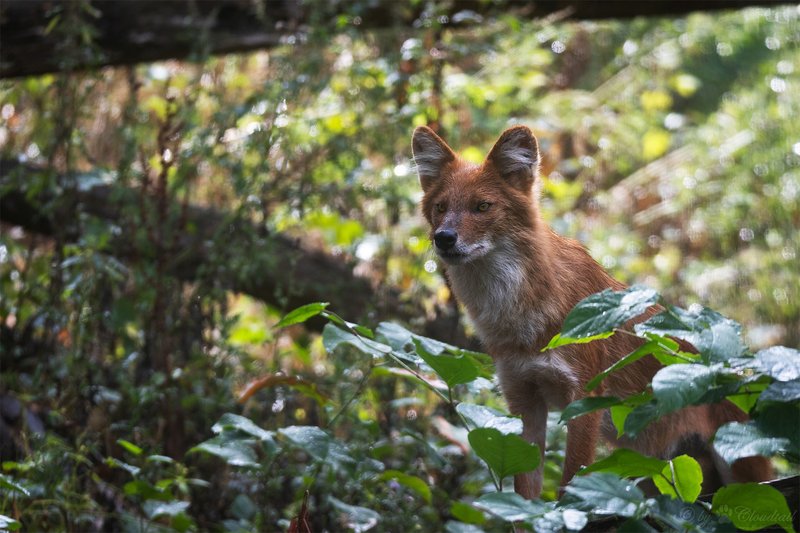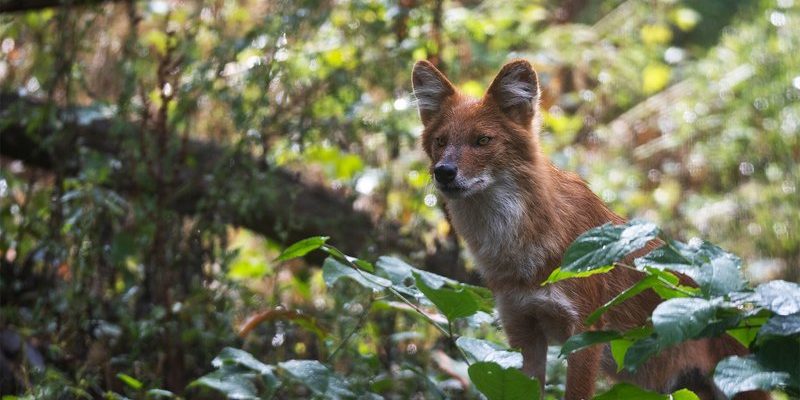
Dholes are apex predators, but they also face threats from habitat loss and competition with other carnivores. Understanding their role isn’t just about appreciating another animal; it’s essential for conservation efforts and maintaining the biodiversity of their habitats. So, let’s dive deeper into the life of the dhole and see how this remarkable animal fits into the grand puzzle of nature.
What is a Dhole?
Dholes are medium-sized canids, typically weighing between 30 to 45 pounds. They have a striking reddish-brown coat, a long, slender body, and a bushy tail that they often hold high when moving through the forest. These dogs are native to Asia, found primarily in India, China, and Southeast Asia. They thrive in a variety of habitats, including forests, grasslands, and mountainous regions.
One of the most remarkable things about dholes is their social structure. They live in packs of around 5 to 12 individuals, which allows them to hunt collaboratively. Here’s the thing: teamwork is critical for dholes, as they often pursue prey larger than themselves. This social behavior not only enhances their hunting success but also helps raise their young. When you see a dhole pack in action, it’s like watching a well-rehearsed dance—each member knows its role.
You might be wondering why these dogs are important to their ecosystems. Dholes are not just hunters; they have a significant impact on the populations of their prey, which in turn influences the entire food web.
The Dhole as an Apex Predator
An apex predator is at the top of the food chain, and dholes fit that description. They prey on various animals, including deer, boar, and smaller mammals. This predation is crucial for maintaining the balance of their ecosystem. By controlling the populations of these herbivores, dholes help prevent overgrazing. This natural regulation keeps vegetation healthy, providing food and shelter for other wildlife.
Moreover, dholes have a unique hunting strategy. Unlike solitary hunters like lions, dholes work together to track and chase their prey. They can run long distances and communicate through a series of yips and whistles, coordinating their efforts effectively. This teamwork not only makes them efficient hunters but also ensures that they can take down larger animals that would be difficult for a single dog to tackle.
Their role as apex predators means that the health of dhole populations is closely tied to the overall health of their ecosystems. When dhole numbers decline, it can lead to an increase in herbivore populations, which can, in turn, harm vegetation and other animal species reliant on that habitat.
The Impact of Dhole on Prey Populations
Let’s talk about the food chain. In any ecosystem, a balanced predator-prey relationship is vital. Dholes play a key role in this dynamic by influencing the populations of their prey species. For instance, if deer populations are high, they can overgraze the land, leading to a decrease in plant life. This is where dholes come in. By hunting deer, they help maintain a healthy balance.
Interestingly, dholes have a more significant impact than you might think. Studies show that when dhole packs are present in an area, there’s often a noticeable reduction in the local deer population, promoting a healthier habitat overall. This effect can also benefit other carnivores by reducing competition for food. It’s like a ripple effect: when dholes thrive, many other species in their ecosystem can benefit too.
If dholes were to decline or disappear, we’d likely see shifts in plant cover and changes in animal populations, leading to a less diverse and less stable ecosystem. That’s why understanding the dhole’s role is crucial in conservation efforts.
Dholes and Their Habitat
The dhole’s habitat ranges from tropical forests to temperate regions, meaning they adapt to various environments. This adaptability is impressive, but it also means that their survival is closely tied to the health of these habitats. Unfortunately, human activities like deforestation and urban development threaten these environments. When forests are cut down, dholes lose their homes and hunting grounds, pushing them closer to extinction.
Preserving their habitats is essential, not just for the dholes but for the entire ecosystem. When dholes lose their habitat, the balance they maintain also tips. This leads to a broader issue of biodiversity loss and habitat degradation, affecting countless other species.
Conservation initiatives aimed at protecting dhole populations often focus on preserving large areas of forests and grasslands. These efforts ensure that not only dholes but also the countless other species that rely on these habitats can thrive. It’s like protecting a vital piece of a larger puzzle.
The Social Structure of Dholes
One of the most intriguing aspects of dhole behavior is their social structure. Dholes live in packs led by a dominant breeding pair. This social system creates a supportive environment for raising pups and hunting. The fact that they work together is fascinating and vital for their survival.
Here’s a little story to illustrate this: imagine a young dhole pup learning to hunt. As it grows, it watches its family members work together to track and catch prey. This pup learns not only the hunting techniques but also the importance of teamwork and communication. It’s a strong family unit, much like a close-knit team striving towards a common goal.
This social system is not just about hunting; it also plays a crucial role in the survival of the species. Healthy pack dynamics can lead to higher survival rates for pups and better access to food. Dholes have a complex social life, which contributes to their effectiveness as hunters and their adaptability in various environments.
Conservation Status and Efforts
Sadly, dholes are classified as endangered by the International Union for Conservation of Nature (IUCN). Their populations are dwindling due to habitat loss, human-wildlife conflict, and diseases. Understanding their significance in the ecosystem is essential for conservation efforts. Whenever we lose a species like the dhole, we lose a part of the intricate tapestry of nature.
Conservation organizations are working hard to protect dholes and their habitats. Initiatives include creating wildlife reserves, raising awareness, and promoting coexistence between humans and wildlife. Protecting dholes means protecting the balance of their ecosystems, ensuring other wildlife can thrive alongside them.
You might wonder how you can help. Supporting conservation efforts, whether through donations or spreading awareness, can make a difference. Every bit helps to protect these incredible creatures and their environment.
The dhole is more than just a wild dog. It’s a vital player in its ecosystem, helping maintain balance and health. From controlling prey populations to being an integral part of the food chain, the dhole’s role is crucial for biodiversity.
As we continue to learn about these fascinating creatures, it’s important to keep in mind the challenges they face. By working together to protect dholes and their habitats, we can help preserve the delicate balance of nature for future generations. So, the next time you hear about dholes, remember their unique role and the importance of keeping our world’s ecosystems healthy and vibrant.

